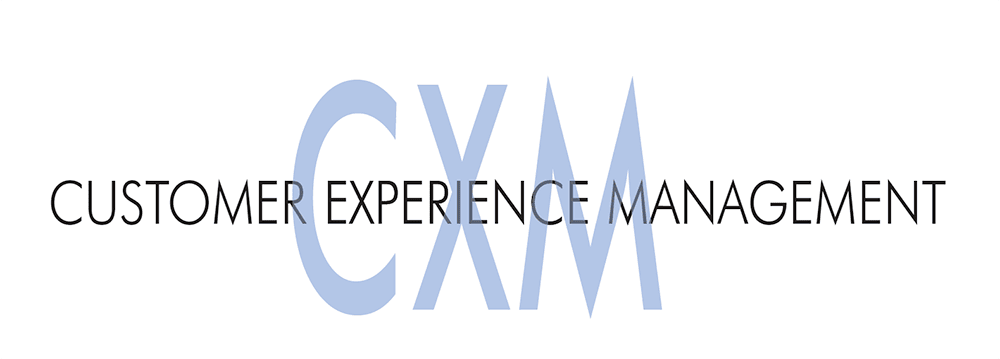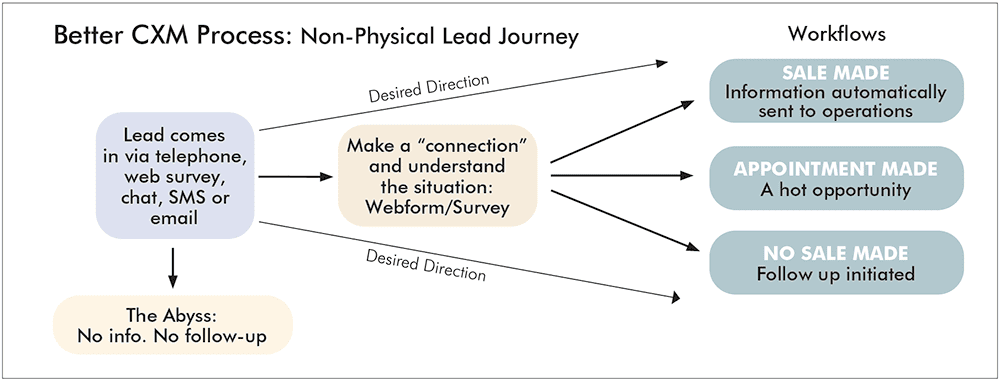Furniture World Magazine
Volume 151 NO.2 March/April
By David McMahon on 3/20/2021
Here is a tool that will help you to grow your furniture business and outperform competitors large and small.
One of the biggest opportunities for home furnishing businesses is developing Customer eXperience Management (CXM). To help you understand what piqued my interest in CXM, let’s start with a story. It begins with the COVID shutdown in the U.S. when almost every state shuttered so-called non-essential retail, a category that included most furniture stores.
Operations approached this closure in different ways. Some businesses decided to completely close. Others decided to shut the front doors of their physical stores. Many completely ceased operations— laid off employees and even posted website messages that they were not open at this time.
Lead Managers working in formal business development centers or BDCs provide salespeople with a steady stream of warmed up and qualified customers. |
More consumers were brought into the market for home furnishings because of COVID. It has been the best promotion ever for our industry. Operations now find themselves short of resources—namely people and inventory. But unbelievably, overall, retailers are more reactionary then ever—drifting back to their old ways of doing things—focusing mostly on physical store traffic. There is enough customer traffic, so why change anything, right? My response: Businesses need to improve now because this uplift in business will come to an end.
Some Say They are Crazy
That said, there are retailers who are refining their systems and processes and are getting even better results. Some stores have decided not to re-open their physical front doors for public walk ins in the old way, even though they are allowed to do so. Many would say, this is crazy! Well maybe – maybe not. I know of cases where similar or better results are being produced from appointment only operations. How can this be? It’s because appointment customers’ close rates are much higher than the approximate 25 percent the furniture industry was stuck at for many years. Now, there are stores getting double that number. At the same time average sale for appointment business is also much higher. The silver lining is that fewer salespeople are needed because they are more effective with their traffic.
An appointment-only strategy is not for everyone. However, by developing Customer eXperience Management (CXM) and professionally handling leads, retailers can get better sales due to higher close rates and higher average sale. The main goal here is to handle leads in a proper fashion to produce appointments. With this system, Lead Managers working in formal business development centers or BDC’s provide salespeople with a steady stream of warmed up and qualified customers.
Why CXM is Important
So, what is CXM and why is it important? It’s a customer-focused process that delivers effective and efficient business communications to customers. To be effective, communications must “say” the right things and get the right results at the right times. To be efficient, communications need to be simple and often automatic, not holding the organization back in terms of workload.
CXM should span the customer’s entire journey and beyond: from the time of initial contact with a prospect, to making a written sale, then through the often several months it takes to get the sale delivered, and finally, inspiring a next purchase. Keeping in touch with customers at the right times with the right messages is at the core of good CXM. It keeps your customer close by providing exceptional value throughout their experience with you. Done right, it makes you better than your competition and sets you apart in your marketplace.
CXM done well makes retail owners, managers and salespeople more productive. It does the same for your customers. In fact, the main purpose of CXM is to build more customers, for life!
To be efficient, communications need to be simple and often an automatic process that does not hold the organization back in terms of workload. |
CXM Challenges
If CXM was easy to implement, everybody would be doing it equally well. Let’s explore the challenges and the ways home furnishings retailers can get past them. As was mentioned, furniture retailers do a good job of handling physical, in-store traffic. Non-physical leads, however, are generally non systematized. For example, if a telephone call from a prospect comes in, whomever answers it will likely handle it quickly and fail to ask them for information /qualify them. The result is that the retailer can’t track if that caller subsequently visits the store, let alone buys. This is a missed opportunity that results in wasted lead traffic and underperforming sales.
A big challenge for many retailers is that shoppers communicate in a whole bunch of different ways. They use chat, telephone, text, email, Facebook… you name it! And, retailers don’t have a good system that ties all this incoming information together. Another problem for many furniture retailers is that they fail to take a proactive approach that leads every customer towards the best solution, which is buying the right furniture, mattresses, accessories and protection plans!
Managing Better
Improving processes, systems and how they work together equals better outcomes. Retailers have achieved 100 percent increases in close rate, and 100 percent increases in average sale, by capturing incremental business with CXM. Another big benefit is that the improved service experience leads to happier customers. This in turn generates better word-of-mouth messaging—the best advertising in the world. When you become more remarkable through better CXM (at least better than your competition) you will get more free advertising in your community.
The Big Picture
The solution to lots of the problems furniture retailers have is complete customer experience management. Complete means that it is all-encompassing. CXM is an integrated set of all customer related communication systems and processes, including ERPs, and tools like Podium and DispatchTrack. Also, text, email, chat, service ticketing and telephone calls. All this should be integrated in one common area which allows for transparency across an organization and elevates the customer experience. It’s similar to CRM (Customer Relationship Management). I call it CXM because the eXperience and the customer journey encompasses more than traditional CRM.
Problem Solving
CXM helps solve common issues such as open sales follow up. With lead times extending well beyond the pre-pandemic norm, retailers’ open sales files have ballooned. Follow-up has been a challenge to say the least. Who are the people that have to do the most follow up? The best salespeople, of course! And, they are the ones with the least amount of time. CXM should be geared toward helping salespeople focus on the most important tasks— to keep their customers happy and help them buy more often. This can be done through process and workflows that are predefined and automated to some degree. Here is one example of better CXM processes (in the second part of this article more examples of better CXM will be presented).
Non-Physical Lead Journey
When leads come in via a telephone call, webchat, survey, SMS, email, or other non-physical way, retailers need to channel the conversation in a desired direction. First, a connection needs to be made with the customer by gaining an understanding of their reason for calling. As with in-store traffic, a series of questions should be asked, such as: “What room are you working on? What do you like about your room? What don’t you like about your room? Who is using the room?” Let’s say a customer makes contact through phone, mail or chat, to inquire if you have recliners in stock. It’s easy to see that the worst result will come from responding with some version of, “Yes, please come on in and make sure to ask for me, my name is Joe.” Then hang up. Unfortunately, that is often the standard reply, especially for busy employees. Instead, CXM systems can be geared towards making a real connection. Once that happens there are three possible outcomes:
- A sale.
- An appointment is made.
- Some agreed upon follow up results.
Systems define outcomes! Each of these three outcomes, when handled with CXM systems, can trigger automatic workflows making it much more likely that the person who called, emailed, or used a website chat feature will have a positive experience and make a purchase.
Next Issue
Part two of this article, will examine the lead management process in more detail. It will also provide more examples of better CXM and present ideas for effective implementation strategies. To sum things up for now, CXM helps the customer move more effectively and efficiently through their retail journey. It helps organizations improve processes, which always leads to better outcomes for retailers and their customers.
